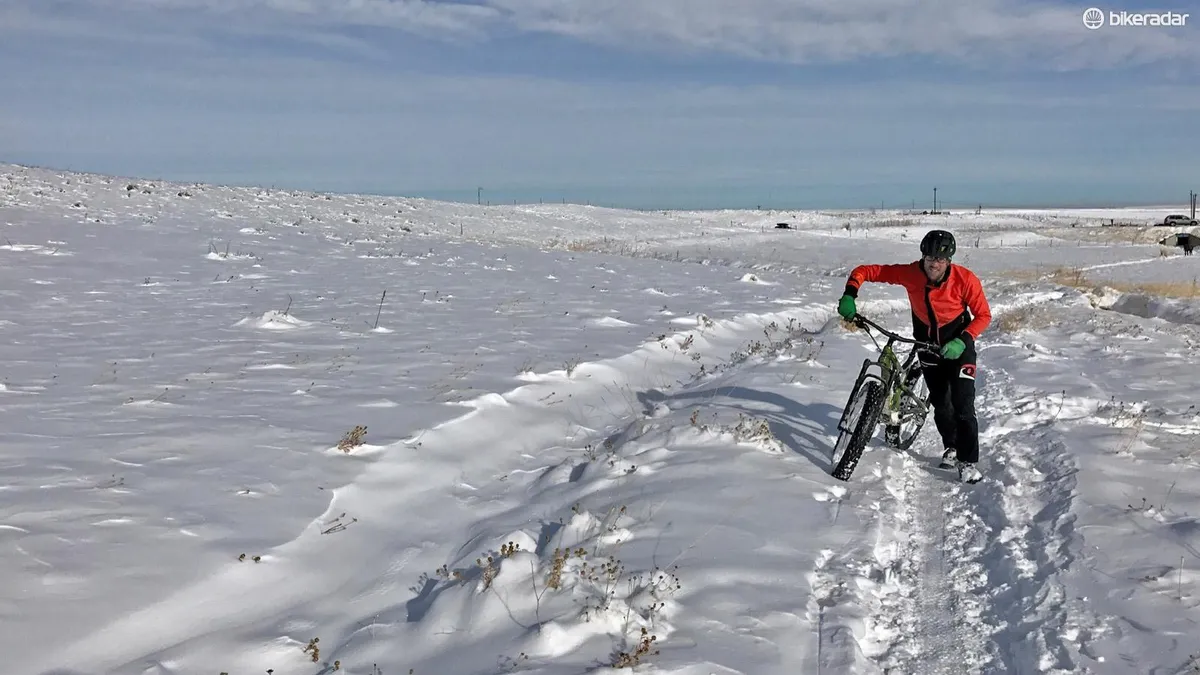Fat bikes are fun for a lot of riders. Fat bikes dutifully serve the needs of a lot of riders. Fat bikes get people out of the house on days they might not have otherwise. These are all awesome things, but one thing fat bikes still struggle with is the implementation of full suspension.
Here are five reasons why.
- Less is more: why the 27.5+ standard is doomed
- Top 5 MTB trends for 2017
- Qloom Watson Lake pants review
1. Tires
Tire technology isn't quite ready yet. I’ve been trying to figure out the answer to this for a while: what’s worse, the uncontrolled bounce of an undamped inflated fat tire or the sidewall flexing squirm of an under inflated fat tire?
Will tire manufacturers catch up and make improvements? Of course, I firmly believe they will. Would a system like Schwalbe's Procore or a tire liner like a Huck Norris improve the ride? Possibly…
2. Rims
The rims can’t handle hard riding on dry trails. On the snow it’s not much of an issue, but subtract the white cushiony stuff, add a bunch of unflinching rocks and roots, and rims start dying. Cracks at the rim's bead seem to be the most common damage.
The extra width, combined with the lack of depth makes fatty rims more susceptible to damage. I’ve broken a carbon rim and know much lighter riders who have also cracked fat rims.

3. It's too much to dial in
There are too many variables interacting with each other. With full-suspension there are two shocks to set up with air pressure, rebound, compression and bottom-out spacers. Throw in two extremely pressure sensitive tires on top of that and mix with the complications that the tires and suspension play upon each other, and it’s often a bad-tasting recipe for a poor handling bike.
4. Forks
While fat bike rear shocks are the same sorted brethren as regular MTBs, for fat bikes there are no decent forks.
Kudos to RockShox for being brave enough to develop the Bluto nearly four years ago, but when pressed hard the Bluto’s shortcomings are readily apparent. The skinny 32mm stanchions can’t keep up with the weight of a fat wheel and tire. Those thin pipes also get a bit wiggly when loading the tire’s big traction patch on the ground.
Yes, there’s Wren, RST, Lauf and maybe a few others, but if my first rides of the Wren and Lauf are any indication, my fourth point holds weight.
Manitou has a new fat bike suspension fork coming, the Mastodon, maybe it’ll bring fatty front suspension up a few notches.
5. Weight
Fat bikes are heavy where it hurts the most, at the wheels. Fun is a major part of full-suspension bikes. Fun in my eyes means dynamic riding, where jumping, slashing, accelerating and throwing the bike around is the norm. Adding big, heavy wheels and tires diminishes all of those traits.
Sure, a fat bike can be ridden like a goon, but trying to get zesty on a fat bike feels like someone has thrown a wet, heavy bedspread over me and all my power and movements are weak and/or damped.
Full-suspension fat bikes are their own worst enemies. As mentioned in the Salsa Bucksaw review, the bike is too fun for its wheels, tires and fork.
I've had a lot of fun and some not so fun days on fat bikes. I've ridden them on snow, ice, dirt and a mix of all three. I believe as they are now they're great for touring, exploring and sure as heck beat sitting inside any day.
Full-squish fat bikes are a different kind of mountain biking fun and that's cool. I'll be truly excited for when the rest of package can keep up.
